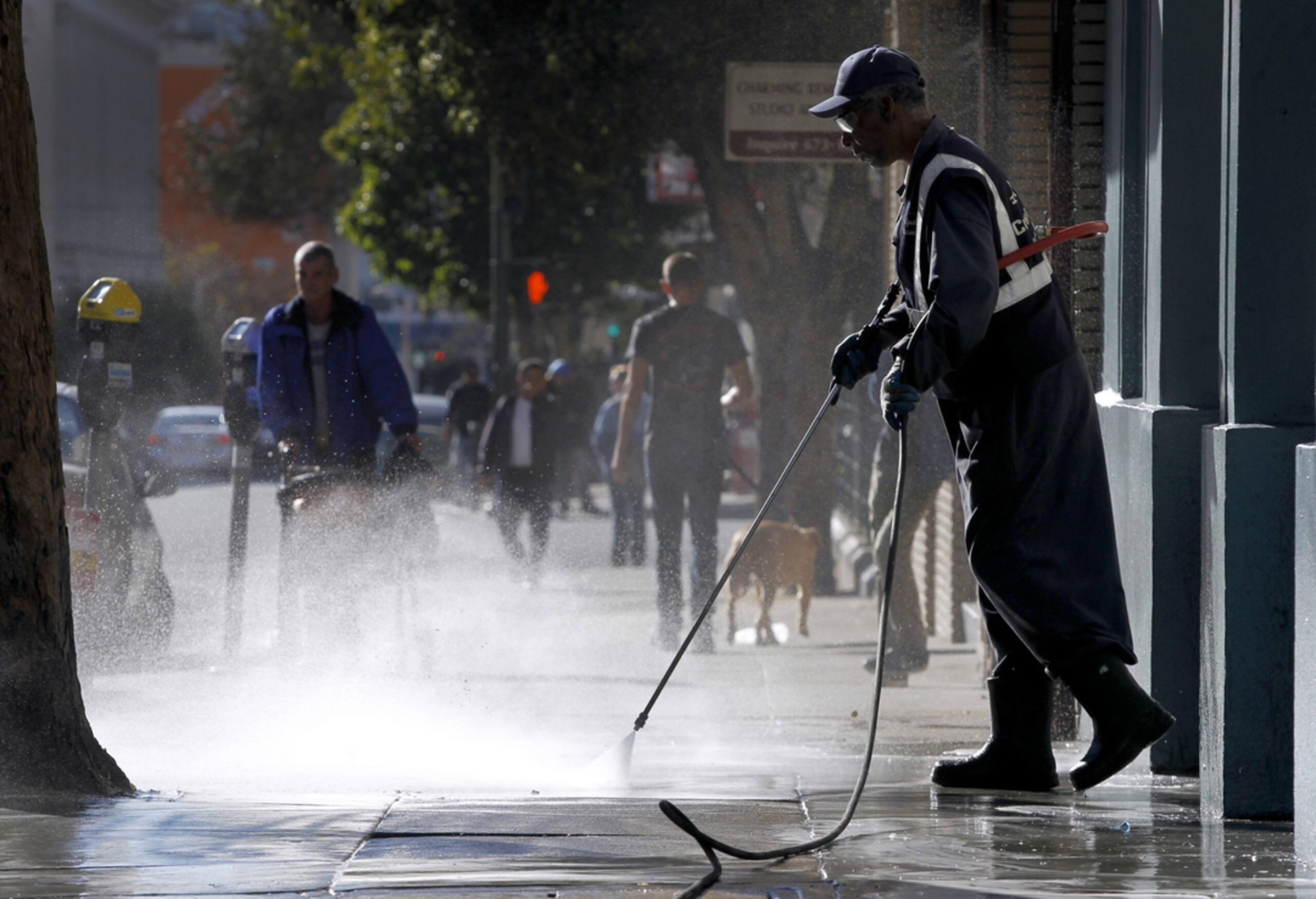From sidewalk feces to overflowing trash cans, San Franciscans have long complained about how dirty the city is. And now we have official confirmation from City Hall. The Controller’s Office (opens in new tab) released a report Monday telling many city residents what they already knew: San Francisco is a pretty dirty place.
Its conclusions? Commercial corridors throughout Downtown San Francisco struggle more with cleanliness than do residential streets. And hard-hit areas of Downtown deal with significantly higher amounts of street litter and other cleanliness issues than in wealthier neighborhoods like Noe Valley.
Titled “Street & Sidewalk Maintenance Standards,” the survey also showed that the lack of cleanliness is, in many ways, a citywide problem, but certain neighborhoods face unique problems—such as illegal dumping or sidewalk damage—that don’t hit other areas as hard.

To compile it, officials evaluated some 3,000 residential streets and commercial corridors over 2021-22, as mandated by the city services auditor. They deployed two surveys: The Core Citywide Survey, which analyzed “street segments”—bureaucratese for short, residential streets—and the Key Commercial Areas Survey, which looked at busy commercial corridors, mostly located in and around Downtown.
Evaluations included rates of litter, graffiti, broken glass, maintenance and other street and sidewalk conditions.
Commercial and Residential Disparities
If you’re walking in one of San Francisco’s many commercial corridors, you’re much more likely to come across litter, graffiti, poop or broken glass—at least, that’s what the survey shows.
Nearly two-thirds of key commercial routes reported moderate to severe street litter, compared with the 41% of citywide streets that struggle with the same problem. The disparity was slightly more severe for sidewalk litter, which was also worse in commercial areas than in the rest of the city.
Since the pandemic, the city has upped its efforts to power-wash streets and deploy Public Works Department teams to hard-hit neighborhoods. But some residents worry these efforts are not enough, and have literally taken matter(s) into their own hands through volunteer cleanups and 311 reporting.
READ MORE: Disgusted by San Francisco’s Streets? Here’s How You Can Help
San Francisco’s commercial and residential streets are also highly tagged up, with every neighborhood except one—Visitacion Valley—reporting high levels of graffiti last year. The issue is once again worse in commercial areas, of which 71% said they had severe or moderate graffiti.
“In terms of actual counts of graffiti observed, there were about 10 times (160,000 vs. 16,000 respectively) as many instances of graffiti reported in the Key Commercial Areas survey in comparison to the Citywide sample,” the report said.
And San Francisco’s favorite cleanliness fixation, human or animal feces, continues to be a sore spot for the city: Almost half of the surveyed commercial areas observed feces. Citywide, that figure was just 30%.
“It’s terrible; this street is covered,” said Joe Souza, a Tenderloin resident who has lived on Larkin Street for a year. “There’s poop everywhere. You always see it along the wall and in front of the garage there.”
Broken Sidewalks
The issue isn’t just overflowing trash cans and garbage on the sidewalk; the city survey also revealed that the overwhelming majority of San Francisco’s sidewalks are defective, meaning that they are cracked, broken or uneven.
Hilly regions further south and neighborhoods Downtown reported some of the highest shares of severe sidewalk defects. The Lone Mountain/University of San Francisco area took the top spot, with half of 24 evaluations showing severely messed-up sidewalks.
This issue became especially apparent in recent months, after a series of severe winter storms uprooted hundreds of trees and cracked sidewalks in the process. Though a 2016 voting measure secured some $19 million in funding for tree and sidewalk repairs, sidewalk defects continue to plague nearly every corner of San Francisco.

This is the first year the city implemented new evaluation standards to study San Francisco’s street cleanliness, and the report suggests City Hall is acutely aware of the magnitude of the problem on its streets and sidewalks.
“This collaborative process with SF Public Works will drive deeper analytical work that aims to support operational decisions,” the report said, noting that the Controller’s Office plans to increase survey evaluations and make them more granular to individual neighborhoods.
The survey said its findings can be used to refine the Public Works’ allocation of resources, such as in its response to street cleaning requests and proactive sweeping schedules.
